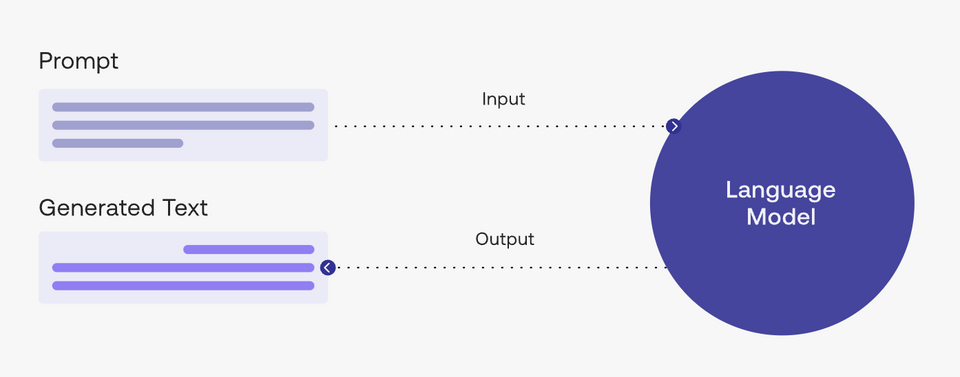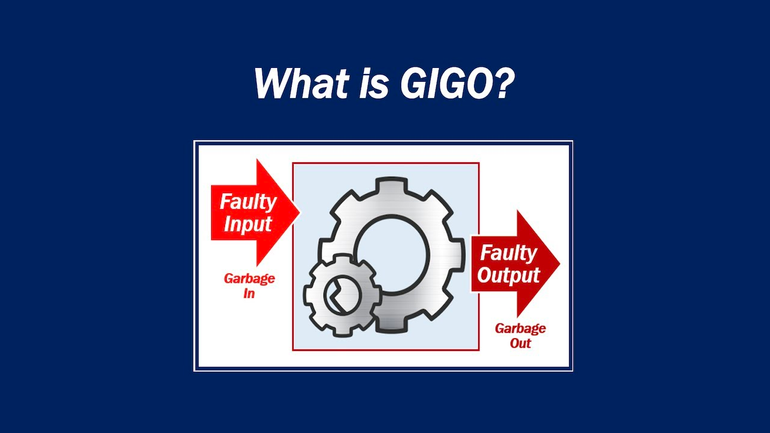Create unique Marketing and Copywriting with ChatGPT
Search and store tool for Chat GPT Prompt
Create unique and engaging Marketing and Copywriting content with ChatGPT, a pre-trained language model by OpenAI for generating high-quality and accurate copy. Improve your SEO ranking with powerful and persuasive copy that converts readers into satisfied customers. With ChatGPT, you can create content that resonates with your target audience and drives traffic to your website. Say goodbye to dull and uninspired copy and hello to engaging and memorable content that captures the hearts and minds of your readers. Let ChatGPT help you elevate your Marketing and Copywriting game today!
Opinion on Generating Quora Question Ideas to Demonstrate Industry Knowledge and Attract Target Audience

Generate [number] Quora question ideas that our client can answer to demonstrate their industry knowledge and attract their target audience. Context: Target audience — [your target audience here] Client's industry knowledge — [your client's industry knowledge here] Quora goals — [your Quora goals here] Inspiration: "[Quora question inspiration one]" "[Quora question inspiratio...
Developing Effective Webinar Topics to Boost Leads for Client Services

Develop [number] webinar topic ideas that educate our target audience on the benefits of our client's services and generate leads. Context: Target audience — [your target audience here] Client's services — [your client's services here] Webinar goals — [your webinar goals here] Inspiration: "[webinar inspiration one]" "[webinar inspiration two]" "[webinar inspiration three]"...
1 Twitter Thread Ideas to Engage Your Client's Audience of [Industry] with Valuable Insights
![1 Twitter Thread Ideas to Engage Your Client's Audience of [Industry] with Valuable Insights](https://spacewikif.nyc3.cdn.digitaloceanspaces.com/image-prompt/1-twitter-thread-ideas-to-engage-your-clients-audience-of-industry-with-valuable-insights-Example.jpeg)
Write [number] Twitter thread ideas that share valuable insights on a topic relevant to our client's industry and engage their target audience. Context: Target audience — [your target audience here] Client's industry — [your client's industry here] Thread goals — [your thread goals here] Inspiration: "[Twitter thread inspiration one]" "[Twitter thread inspiration two]" "[Tw...
Effective Facebook Ad Ideas to Boost Your Client's Website Traffic and Promotions

Generate [number] Facebook ad ideas that drive traffic to our client's website and showcase their latest promotions. Context: Target audience — [your target audience here] Client's promotions — [your client's promotions here] Ad goals — [your ad goals here] Inspiration: "[Facebook ad inspiration one]" "[Facebook ad inspiration two]" "[Facebook ad inspiration three]" Form...
How to Create SEO-Optimized Blog Post Titles to Attract Organic Traffic and Showcase your Client's Expertise

Write [number] SEO-optimized blog post titles that will attract organic traffic and showcase our client's expertise. Context: Target audience — [your target audience here] Client's area of expertise — [your client's expertise here] Keyword focus — [your keyword focus here] Inspiration: "[blog title inspiration one]" "[blog title inspiration two]" "[blog title inspiration th...
Generating Infographics and Campaign Ideas for Product Launch

Generate [number] infographic ideas that effectively communicate the value proposition of our client's product or service. Context: Target audience — [your target audience here] Client's product or service — [your client's product/service here] Value proposition — [your value proposition here] Inspiration: "[infographic inspiration one]" "[infographic inspiration two]" "[in...
5 Ideas for Animations and Interactive Elements on Your Website for Better Engagement

Provide 5 ideas for using animations and interactive elements in our agency's website to create a more engaging and memorable user experience. Context: Target audience — [your target audience here] Current website interactivity — [describe current website interactivity here] Desired animation and interaction outcomes — [your desired outcomes here] Inspiration: "[animation inspira...
Develop Creative Concepts for a Podcast Series on Industry Trends and Thought Leadership | Opinion and Guidelines Prompt for ChatGPT

Develop [number] creative concepts for a podcast series that explores industry trends and thought leadership while positioning our brand as a knowledgeable resource. Context: Target audience — [your target audience here] What I do — [your elevator pitch here] Content topics — [your content topics here] Podcast series focus — [your podcast series focus here] Inspiration: "[podcast series ins...
Create [number] Engaging Video Concepts for Targeted Education of Brand Expertise
![Create [number] Engaging Video Concepts for Targeted Education of Brand Expertise](https://spacewikif.nyc3.cdn.digitaloceanspaces.com/image-prompt/create-number-engaging-video-concepts-for-targeted-education-of-brand-expertise-Example.jpeg)
Develop [number] creative concepts for a video series that educates our target audience on a specific topic and highlights our brand expertise. Context: Target audience — [your target audience here] What I do — [your elevator pitch here] Content topics — [your content topics here] Video series topic — [your video series topic here] Inspiration: "[video series inspiration one]" "[video seri...
Creating Testimonial Campaign Ideas to Build Trust with Your Target Audience

Create [number] ideas for a testimonial campaign that showcases the success stories of our customers and builds trust with our target audience. Context: Target audience — [your target audience here] What I do — [your elevator pitch here] Content topics — [your content topics here] Testimonial goals — [your testimonial goals here] Inspiration: "[testimonial campaign inspiration one]" "[test...
5 Brainstorming Tips for BTS Content Series to Humanize Your Brand

Brainstorm 5 unique ideas for a behind-the-scenes content series that humanizes our brand and showcases the people who make it all possible. Context: Target audience — [your target audience here] What I do — [your elevator pitch here] Content topics — [your content topics here] Behind-the-scenes focus — [your BTS focus here] Inspiration: "[BTS content inspiration one]" "[BTS content inspir...
Creating Employee Advocacy Concepts to Amplify Brand Story

Create [number] creative concepts for an employee advocacy program that empowers our team members to share our brand story and amplify our message. Context: Target audience — [your target audience here] What I do — [your elevator pitch here] Content topics — [your content topics here] Advocacy goals — [your advocacy goals here] Inspiration: "[employee advocacy inspiration one]" "[employee ...
5 Techniques to Generate Attractive Brand Mascot Ideas for Your Target Audience

Develop 5 ideas for a brand mascot or character that embodies our brand identity and engages our target audience in a fun, memorable way. Context: Target audience — [your target audience here] What I do — [your elevator pitch here] Content topics — [your content topics here] Brand identity — [your brand identity here] Inspiration: "[brand mascot inspiration one]" "[brand mascot inspiration...
Create Branded Event Concept for Target Audience Community Building

Create [number] creative concepts for a branded event that brings our target audience together and fosters community around our brand. Context: Target audience — [your target audience here] What I do — [your elevator pitch here] Content topics — [your content topics here] Event goals — [your event goals here] Inspiration: "[branded event inspiration one]" "[branded event inspiration two]" ...
Propose [number] ideas for a loyalty program that rewards customers and encourages repeat business | Loyalty Program for [target audience]
![Propose [number] ideas for a loyalty program that rewards customers and encourages repeat business | Loyalty Program for [target audience]](https://spacewikif.nyc3.cdn.digitaloceanspaces.com/image-prompt/propose-number-ideas-for-a-loyalty-program-that-rewards-customers-and-encourages-repeat-business-loyalty-program-for-target-audience-Example.jpeg)
Propose [number] ideas for a loyalty program that rewards our customers for their continued support and encourages repeat business. Context: Target audience — [your target audience here] What I do — [your elevator pitch here] Content topics — [your content topics here] Loyalty program goals — [your loyalty program goals here] Inspiration: "[loyalty program inspiration one]" "[loyalty progr...
Brainstorm Creative Concepts for a Mobile App That Encourages Brand Loyalty: A Guide for Marketers

Brainstorm [number] creative concepts for a mobile app that adds value to our customers' experience and encourages brand loyalty. Context: Target audience — [your target audience here] What I do — [your elevator pitch here] Content topics — [your content topics here] App features — [your app features here] Inspiration: "[mobile app inspiration one]" "[mobile app inspiration two]" "[mobile...
Develop Interactive Quizzes for Engaging Target Audience and Collecting Valuable Data

Develop [number] creative concepts for an interactive quiz that engages our target audience and collects valuable data for future marketing efforts. Context: Target audience — [your target audience here] What I do — [your elevator pitch here] Content topics — [your content topics here] Data collection goals — [your data collection goals here] Inspiration: "[interactive quiz inspiration one]...
Developing a successful podcast series to position your brand as an industry thought leader

Develop [number] ideas for a podcast series that provides valuable insights and information to our target audience while positioning our brand as an industry thought leader. Context: Target audience — [your target audience here] What I do — [your elevator pitch here] Content topics — [your content topics here] Industry expertise — [your industry expertise here] Inspiration: "[podcast inspir...
Proposing Ideas for a Virtual Event that Engages Target Audience and Showcases Unique Value Proposition

Propose [number] ideas for an immersive virtual event that engages our target audience and showcases our brand's unique value proposition. Context: Target audience — [your target audience here] What I do — [your elevator pitch here] Content topics — [your content topics here] Unique value proposition — [your unique value proposition here] Inspiration: "[virtual event inspiration one]" "[vi...
Brainstorm Creative User Onboarding Experience Ideas to Educate Customers and Enhance Engagement

Brainstorm [number] creative ideas for a user onboarding experience that educates new customers about our product/service and encourages long-term engagement. Context: Target audience — [your target audience here] What I do — [your elevator pitch here] Content topics — [your content topics here] Product/service features — [your product/service features here] Inspiration: "[user onboarding i...
What is “prompt engineering”?
A “prompt” is the input that guides a generative AI model to generate useful outputs. Generative AI tools like ChatGPT, GPT, DALL·E 2, Stable Diffusion, Midjourney, etc. all require prompting as their input.

In a natural language processing (NLP) context, “prompt engineering” is the process of discovering inputs that yield desirable or useful results. As is the story with any processes, better inputs yield better outputs; or commonly said another way “garbage in, garbage out.”


Become a prompt researcher instead of engineer
- If you’re already a subject matter expert in something, consider figuring out how to apply your personal skills to generating the best prompts in your field
- For example, if you’re an expert in SEO, what questions do you ask yourself when creating SEO strategies? How can you translate this knowledge into better prompts to generate the same level of output with AI?
Become a prompt researcher instead of engineer
- The term prompt engineer glosses over the idea that prompt formulation takes hypothesizing, research, result measurement, and repetition. Instead, approach prompting like a research project.
- Try as many different variations and formulations of your prompt as possible. One problem can have hundreds of solutions and one solution can have hundreds of approaches. The same can be said of prompting.